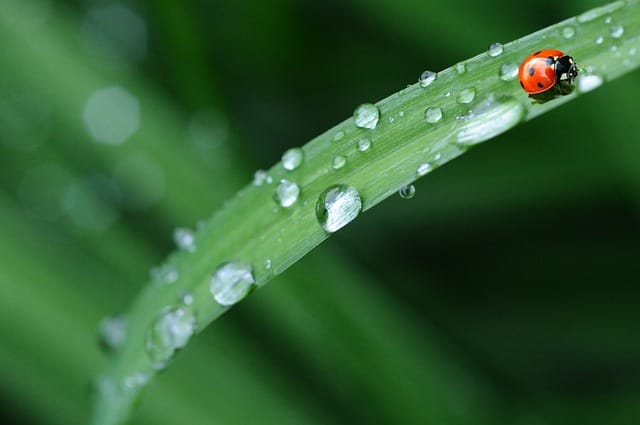Promoting pollinators: Ladybugs
Ladybugs, also known as ladybirds or lady beetles, are fascinating insects

In this article:
- Introduction to Ladybugs as Pollinators
- Importance of Pollinators in Ecosystems
- Ladybugs' Role as Pollinators
- Ladybug Anatomy and Adaptations for Pollination
- Types of Plants Ladybugs Pollinate
- Ladybugs' Pollination Techniques
- Ladybugs' Relationship with Flowers and Nectar
- Factors Affecting Ladybug Pollination
- Impacts of Ladybugs' Pollination on Plant Reproduction
- Examples of Crops Benefitting from Ladybug Pollination
- Conservation Efforts and Threats to Ladybug Pollinators
- Understanding the Life Cycle of Ladybugs
- Attracting Ladybugs to Gardens for Pollination
- Conclusion: Appreciating the Role of Ladybugs as Pollinators
Introduction to Ladybugs as Pollinators
Ladybugs, also known as ladybirds or lady beetles, are fascinating insects that play a crucial role in our ecosystems as pollinators. These small and colorful creatures are not only beloved for their aesthetic appeal but also for their important contribution to plant reproduction.
Importance of Pollinators in Ecosystems
Pollinators, including ladybugs, are essential for the health and diversity of ecosystems. They help in the reproduction of flowering plants by transferring pollen from male reproductive organs (stamens) to female reproductive organs (pistils). This process enables fertilization and the production of fruits and seeds.
Ladybugs' Role as Pollinators
While ladybugs are primarily known for their voracious appetite for aphids and other small insect pests, they also actively contribute to pollination. As they visit flowers in search of food, they inadvertently pick up and carry pollen on their bodies, transferring it from one flower to another.
Ladybug Anatomy and Adaptations for Pollination
Ladybugs have specific anatomical features that make them efficient for pollination. Their bodies are covered in tiny hairs, which attract and hold onto pollen. Additionally, ladybugs possess specialized mouthparts that allow them to access nectar from flowers, a crucial energy source for their survival.
Types of Plants Ladybugs Pollinate
Ladybugs are known to pollinate a wide range of flowering plants. They are particularly attracted to plants with small and shallow flowers that provide easy access to the nectar and pollen they seek. Examples of plants ladybugs commonly pollinate include daisies, marigolds, fennel, and yarrow.
Ladybugs' Pollination Techniques
Ladybugs employ different pollination techniques depending on the flower structure. Some plants rely on ladybugs crawling around the petals, while others require the ladybugs to drum their heads against the flowers to dislodge the pollen. Their small size and ability to maneuver easily between flowers make them effective pollinators.
Ladybugs' Relationship with Flowers and Nectar
Ladybugs have a symbiotic relationship with flowers and nectar. They depend on the nectar as a food source and in return, they help plants reproduce through pollination. This mutually beneficial relationship showcases the interdependence of these organisms in maintaining a healthy ecosystem.
Factors Affecting Ladybug Pollination
Several factors can influence ladybug pollination. These include habitat loss, pesticide use, climate change, and the presence of alternative food sources. It is vital to address these factors to ensure the continued survival and effectiveness of ladybugs as pollinators.
Impacts of Ladybugs' Pollination on Plant Reproduction
Ladybugs' pollination efforts have a direct impact on plant reproduction. Through their actions, they facilitate fertilization, leading to the development of fruits and seeds. This process not only ensures the survival of plants but also contributes to the maintenance of biodiversity and the production of food crops.
Examples of Crops Benefitting from Ladybug Pollination
Ladybugs provide valuable pollination services to a variety of crops. Examples of crops that benefit from ladybug pollination include strawberries, tomatoes, peppers, potatoes, and citrus fruits. The presence of ladybugs in agricultural settings can improve crop yields and reduce the reliance on synthetic pesticides.
Conservation Efforts and Threats to Ladybug Pollinators
Conservation efforts are crucial for preserving ladybug populations and their role as pollinators. Threats to ladybugs include habitat destruction, pesticide usage, pollution, and climate change. By implementing sustainable farming practices and creating ladybug-friendly habitats, we can contribute to their conservation.
Understanding the Life Cycle of Ladybugs
To fully appreciate ladybugs as pollinators, it is important to understand their life cycle. Ladybugs undergo complete metamorphosis, transitioning through egg, larval, pupal, and adult stages. Each stage plays a unique role in the life cycle, with adult ladybugs being the main pollinators.
Attracting Ladybugs to Gardens for Pollination
Gardeners can actively encourage ladybugs to visit their gardens for pollination by creating a suitable habitat. Providing diverse flowering plants, avoiding pesticide use, and incorporating ladybug houses or shelters can attract these helpful insects and promote their population in the area.
Conclusion: Appreciating the Role of Ladybugs as Pollinators
Ladybugs may be small, but their contribution as pollinators is significant. By understanding their role, protecting their habitats, and promoting their presence in gardens and agricultural landscapes, we can ensure the continued success of ladybugs as important pollinators, benefiting both plants and ecosystems as a whole.
